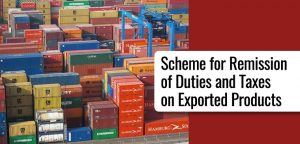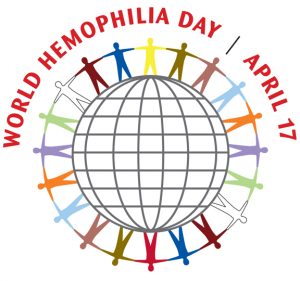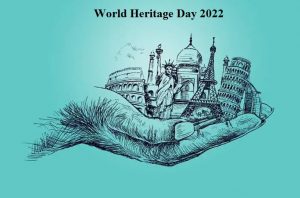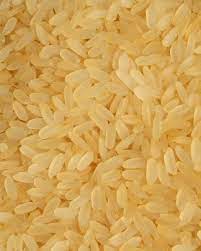Today Current Affairs: 19th April 2022 for UPSC IAS exams, State PSC exams, SSC CGL, State SSC, RRB, Railways, Banking Exam & IBPS, etc
Table of Contents
Actinimenes koyas: New Species Of Shrimp

A new species of shrimp has been discovered by scientists from the ICAR-National Bureau of Fish Genetic Resources (NBFGR). The newly discovered species has been named Actinimenes koyas.
- NBFGR is focused on the documentation of the country’s aquatic genetic resources and gives special attention to shellfish and fish resources.
- The newly-discovered shrimp species was collected at a depth of 1.0–2.0 m from Agatti Island’s coral atoll.
- Agatti Island forms a part of the Lakshadweep islands.
- The discovery was done by a team comprising A. Dhinakaran, Purushothaman Paramasivam, Kuldeep K. Lal, and T.T. Ajith Kumar
- The newly discovered species has been named ‘Koyas’ to honour the Lakshadweep Island’s local community.
- The Koyas are a part of the island’s important ethnic community and have made a significant contribution to the preservation and development of the society’s heritage.
- In morphological traits, this species is related closely to some other species of shrimp.
- This newly discovered species can be easily distinguished from the other shrimp species by the structural variation in this species’ fourth sternal plate along with a median notch.
Environmental Clearance Process:

The Union Ministry of Environment, Forest and Climate Change has introduced a number of changes to the environmental clearance process for projects development projects while proposing to exempt others entirely from its jurisdiction due to which the environmentalists are showing concern.
- These proposals and changes came in the form of two office memorandums and two notifications that were issued between 11th and 12th April 2022.
- For 39 types of developmental projects environmental clearance (EC) is mandatory. The developmental projects include hydropower, mining, thermal power, etc.
- The clearance process is outlined by the Environmental Impact Assessment (EIA) notification that was issued in 2006.
Proposed changes in the exemption of strategic highways
- In its draft notification that was issued on 11th April 2022, the union environment ministry had proposed to exempt highway projects across the country from the environmental clearance process that would be serving the strategic interests of India.
- The notification also stated that the project proponents must comply with a set of standards that will be looking to safeguard the environment.
- Also, the notification has proposed that 15 MW thermal power plants that mainly function on solid waste and biomass and uses up to 15 per cent of coal, petrol, or lignite as an auxiliary fuel, must be allowed to increase, to up to 25 MW, their capacity without the clearance.
- This draft notification is also looking to exempt the expansion of ports for fishermen who are using boats with less potential of pollution potential.
- It also allows the terminal buildings’ expansion within airports, provided they do not take more land.
- This draft notification has been opened for public feedback for a period of 60 days from its date of publishing.
What Is a ‘Poison Pill’ Defence?

Twitter countered Elon Musk’s offer to buy the company for more than $43 billion with a corporate tool known as a poison pill, a defensive strategy by boardrooms trying to fend off takeovers.
- This defense mechanism was developed in the 1980s as company leaders, facing corporate raiders and hostile acquisitions, tried to defend their businesses from being acquired by another enterprise, person or group.
- A poison pill is a maneuver that typically makes a company less palatable to a potential acquirer by making it more expensive for the acquirer to buy shares of the target company above a certain threshold.
- The strategy also gives a company more time to evaluate an offer and can give the board leverage in trying to force a direct negotiation with the potential acquirer.
- A poison pill is officially known as a shareholder rights plan, and it can appear in a company’s charter or bylaws or exist as a contract among shareholders.
- There are different types of poison pills, but usually, they allow certain shareholders to buy additional stock at a discounted price.
Russia As a “State Sponsor Of Terrorism”:

Ukraine has requested US to designate Russia as a “state sponsor of terrorism”.
- The designation would activate perhaps the harshest suite of sanctions available with the US against Russia.
- The US Secretary of State (the minister primarily in charge of foreign relations) has the power to designate countries that “have repeatedly provided support for acts of international terrorism” as “State Sponsors of Terrorism”.
- The US can place four categories of sanctions on countries that are on this list:
- Restrictions on US foreign assistance
- A ban on defence exports and sales
- Certain controls over exports of dual use items
- Miscellaneous financial and other restrictions
- Sanctions can also be placed on countries and persons that engage in certain trade with designated countries.
- As of now, there are four countries on the list of state sponsors of terrorism.
- Syria (Designated on 29th December 1979)
- Iran (Designated on 19th January 1984),
- North Korea (Designated on 20th November 2017).
- Cuba was re-designated as a state sponsor of terrorism on 12th January 2021
National Cyber Security Strategy:

In 2020, the National Cyber Security Strategy was conceptualised by the Data Security Council of India (DSCI) headed by Lt General Rajesh Pant. The report focused on 21 areas to ensure a safe, secure, trusted, resilient, and vibrant cyberspace for India.
- However, amid a surge in cyberattacks on India’s networks, the Centre is yet to implement the National Cyber Security Strategy.
Main Components of the National Cyber Security Strategy:
- Large Scale Digitisation of Public Services: Focus on security in the early stages of design in all digitisation initiatives.
Developing institutional capability for assessment, evaluation, certification, and rating of the core devices
Timely reporting of vulnerabilities and incidents. - Supply Chain Security: Monitoring and mapping of the supply chain of the Integrated Circuits (ICT) and electronics products.
- Leveraging the country’s semiconductor design capabilities globally at strategic, tactical and technical levels.
Critical Information Infrastructure Protection: Integrating Supervisory Control And Data Acquisition (SCADA) security
Maintaining a repository of vulnerabilities. - Preparing an aggregate level security baseline of the sector and tracking its controls.
- Devising audit parameters for threat preparedness and developing cyber-insurance products.
- Digital Payments: Mapping and modelling of devices and platforms deployed, supply chain, transacting entities, payment flows, interfaces and data exchange.
- State-Level Cyber Security: Developing state-level cybersecurity policies,
- Allocation of dedicated funds,
- Critical scrutiny of digitization plans,
- Guidelines for security architecture, operations, and governance.
- Security of Small And Medium Businesses: Policy intervention in cybersecurity granting incentives for a higher level of cybersecurity preparedness.
- Developing security standards, frameworks, and architectures for the adoption of the Internet of Things (IoT) and industrialisation.
Award For Excellence To UDAN Scheme:

The UDAN (UdeDeshkaAamNagrik) Scheme has been selected for Prime Minister’s Award for Excellence in Public Administration 2020 under the category “Innovation (General) – Central”.
- The Ministry of Civil Aviation will receive the award on 21st April,i.e. Civil Service Day.
- The government of India celebrates Civil Services Day, every year as an occasion for the civil servants to rededicate themselves to the cause of serving citizens and renew their commitments to public service and excellence in work.
- The Ministry of Civil Aviation plans and commits to construct 100 new airports by 2024 in India with 1,000 new routes under UDAN Regional Connectivity Scheme (RCS) scheme by the year 2026.
- PMs Award for Excellence in Public Administration was constituted in 2006 by the Government of India to acknowledge, recognize and reward the extraordinary and innovative work done by districts and organisations of the Central and State Governments.
- The award consists of a trophy, scroll and an incentive of Rs. 10 lakh to the awarded district or organisation to be utilised for implementation of project/ programme or bridging resource gaps in any area of public welfare.
- The Scheme was restructured in 2014 for recognizing the performance of District Collectors in Priority Programs, Innovations and Aspirational Districts.
- The Scheme was restructured again in 2020, to recognize the performance of District Collectors towards economic development of the District.
- The Scheme has been revamped with a new approach in 2021 with the objective to encourage Constructive Competition, Innovation, Replication and Institutionalisation of Best Practices.
- Under this approach emphasis would be on good governance, qualitative achievement and last mile connectivity, rather than only on achievement of quantitative targets.
UDAN Scheme:
- It was launched as a RCS under the Ministry of Civil Aviation in 2016.
- Objectives:
- To develop the regional aviation market.
- To provide affordable, economically viable and profitable air travel on regional routes to the common man even in small towns.
- Features:
- The scheme envisages providing connectivity to un-served and underserved airports of the country through the revival of existing air-strips and airports. The scheme is operational for a period of 10 years.
- Under-served airports are those which do not have more than one flight a day, while unserved airports are those where there are no operations.
- Financial incentives from the Centre, state governments and airport operators are extended to selected airlines to encourage operations from unserved and under-served airports, and keep airfares affordable.
Remission Of Duties And Taxes On Export Products (RoDTEP) Scheme:

The government had left out sectors such as iron and steel, chemicals and pharmaceuticals, from the Remission of Duties and Taxes on Export Products (RoDTEP) scheme.
- These sectors were omitted from the scheme, as iron and steel were ‘already booming’ and the pharma industry’s business had also increased during the pandemic.
RoDTEP Scheme:
- The RoDTEP scheme would refund to exporters the embedded central, state and local duties or taxes that were so far not been rebated or refunded and were, therefore, placing India’s exports at a disadvantage.
- The rebate under the scheme would not be available in respect of duties and taxes already exempted or remitted or credited.
- It was started in January 2021 as a replacement for the Merchandise Export from India Scheme (MEIS), which was not compliant with the rules of the World Trade Organisation.
- The MEIS scheme provided additional benefits of 2% to 7% on the Freight On Board (FOB) value of eligible exports.
- For garment exporters, the Rebate of State and Central Levies and Taxes (RoSCTL) Scheme has been notified separately.
- The tax refund rates range from 0.5% to 4.3% for various sectors.
- The rebate will have to be claimed as a percentage of the Freight On Board value of exports.
- Rebates will be issued in the form of a transferable duty credit/ electronic scrip (e-scrip) which will be maintained in an electronic ledger by the Central Board of Indirect Taxes and Customs (CBIC).
World Haemophilia Day:

World Haemophilia day is celebrated on 17th April every year, aiming to increase awareness about haemophilia and other inherited bleeding disorders.
- The day is celebrated in the honour of Frank Schnabel, founder of the World Federation of Haemophilia (WHF).
- This year’s (2022) theme is “Access for All: Partnership. Policy. Progress. Engaging your government, integrating inherited bleeding disorders into national policy”.
Haemophilia:
- Haemophilia is a medical condition, mostly inherited, in which the ability of blood to clot is severely reduced, so that even a minor injury can cause severe bleeding.
- Haemophilia is caused by a mutation or change, in one of the genes, that provides instructions for making the clotting factor proteins needed to form a blood clot.
- This change or mutation can prevent the clotting protein from working properly or to be missing altogether. These genes are located on the X chromosome.
- Because of the genetics involved in the way the sex of a child is determined, men are more vulnerable to haemophilia than women.
- It is quite a rare disease, about 1 in 10,000 people are born with it.
- The most common type of Haemophilia is called Haemophilia A.
- This means the person does not have enough clotting factor VIII (factor eight).
- Haemophilia B is less common.
- A person with Haemophilia B does not have enough factor IX (factor nine).
- Haemophilia A, occurs in about 1 in 5,000 births, while Haemophilia B is even rarer at about 1 in about 20,000 births.
- Symptoms:
- Big bruises.
- Bleeding into muscles and joints.
- Spontaneous bleeding (sudden bleeding inside the body for no clear reason).
- Prolonged bleeding after getting a cut, removing a tooth, or having surgery.
- The main treatment for Haemophilia is Replacement Therapy.
- Concentrates of clotting factor VIII (for Haemophilia A) or clotting factor IX (for Haemophilia B) are slowly dripped or injected into a vein. These infusions help replace the clotting factor that is missing or low.
World Heritage Day 2022:

Every year, 18th April is celebrated as International Day for Monuments and Sites, also known as ‘World Heritage Day’.
- The theme for World Heritage Day 2022 is “Heritage and Climate”.
World Heritage Day:
- The International Council on Monuments and Sites (ICOMOS) established the day in 1982 and the United Nations Educational, Scientific and Cultural Organization (UNESCO) approved it in 1983.
- The aim of the day is to create awareness about Heritage among communities.
- A World Heritage Site is a place that is listed by UNESCO for its special cultural or physical significance.
- The list of World Heritage Sites is maintained by the international ‘World Heritage Programme’, administered by the UNESCO World Heritage Committee.
- This is embodied in an international treaty called the Convention concerning the Protection of the World Cultural and Natural Heritage, adopted by UNESCO in 1972.
- India is home to a total of 3691 monuments and sites. Of these 40 are designated as UNESCO World Heritage Sites.
- Including places like the Taj Mahal, Ajanta Caves and Ellora Caves.
- World Heritage Sites also include natural sites like the Kaziranga National Park in Assam.
- Harappan city of Dholavira in Gujarat as India’s 40th world heritage site.
- Ramappa Temple (Telangana) was India’s 39th World Heritage Site.
- Khangchendzonga National Park, Sikkim has been inscribed as India’s first and the only “Mixed World Heritage Site”.
- In 2022, the Union Ministry of Culture nominated Sacred Ensembles of the Hoysalas temples for consideration as a World Heritage site for the year 2022-2023.
40th Hunar Haat:

The 40th edition of the ‘Hunar Haat’ was inaugurated in Mumbai. In this edition, more than a thousand craftsmen and artisans coming from 31 states and Union Territories participated.
- Hunar Haat has been conceptualized to protect and promote the country’s ancestral legacy of arts and crafts in the current global competition and to support the traditional artisans and craftsmen.
- The artisans selected in the Hunar Haat exhibition are those whose forefathers were involved in such traditional handmade work and are still continuing the profession.
- Theme: Vocal for Local and “Best from Waste”.
- Aim: To provide market exposure and employment opportunities to artisans, craftsmen and traditional culinary experts.
Boosting the skills of craftsmen, weavers and artisans who are already engaged in the traditional ancestral work. - Organizer: These are organized by the Ministry of Minority Affairs under USTTAD (Upgrading the Skills & Training in Traditional Arts/Crafts for Development) scheme.
- The USTTAD scheme aims to promote and preserve the rich heritage of the traditional arts & crafts of the minority communities.
Vaquita Porpoise: Little Cow

According to the United States Commission for Environmental Cooperation (CEC), Vaquita porpoise (Phocoena sinus) is nearing extinction and immediate measures are needed to save the remaining population.
- Porpoises are among the smallest members of the cetacean family (whales, porpoises and dolphins).
- They are only distant relatives of dolphins (they last had a common ancestor roughly 15 million years ago).
- There are only seven species of porpoise, the most popular being the widely distributed harbour porpoise.
- Many species, including the vaquita, are barely studied. Most of what we know about them comes from examining animals that have been washed ashore.
- The vaquita (Phocoena sinus) is the world’s smallest cetacean. Its name means “little cow” in Spanish.
- It has a dark ring around the eyes is its most striking feature, along with a proportionally large dorsal fin.
- It is unique among the porpoises as it is the only species of that family found in warm waters, and the size of the dorsal fin is believed to be an adaptation to that, allowing for extra body heat to dissipate.
- Like many other species of porpoise, vaquita tend to be shy and elusive, avoiding boats when approached.
- Habitats: Found only in the northern Gulf of California (Sea of Cortez) in Mexico. Most commonly seen in shallow waters up to 50 metres deep.
- Threats: The vaquita population has been in sharp decline for decades, recently accelerated by illegal fishing with gill-nets for the vulnerable totoaba, a large fish sought after for its swim bladder.
- The small animal frequently gets caught in fixed fishing nets (gill-nets), as by-catch.
- Protection Status:
- IUCN Red List: Critically Endangered.
- CITES: Appendix I
Draft Uniform Code For Medical Device Marketing Practices:

The Department of Pharmaceuticals (DoP) recently published the draft Uniform Code for Medical Device Marketing Practices (UCMDMP), which is aimed at bringing in a voluntary code to regulate fair marketing practices by the medical device industry.
- It also aims at giving the industry an identity, apart from influencing the marketing dynamics of the pharmaceutical industry.
- Medical devices are characteristically different from pharmaceuticals and therefore a separate code for medical devices was much needed to accurately capture the ethical marketing practice requirements for the medical device sector.
- The implementation of the UCMDMP will be a big step towards furthering patient interest and “will restrain the unethical element and restore competitiveness and esteem for the compliant players.”
Inter-State River Water Disputes Act, 1956:

The Telangana Government has requested the Ministry of Jal Shakti (MoJS) one more time to refer its complaint made under Section 3 of the Inter State River Water Disputes Act, 1956, to the existing Krishna Water Disputes Tribunal-II or Brijesh Kumar Tribunal immediately to finalise the fair and equitable share of Telangana in Krishna waters.
- Art 262 provides for the adjudication of inter-state water disputes. It has two following provisions:
- Parliament may by law provide for the adjudication of any dispute or complaint with respect to the use, distribution and control of waters of any inter-state river and river valley.
- Parliament may also provide that neither the Supreme Court nor any other court is to exercise jurisdiction in respect of any such dispute or complaint.
- Under the provisions of the act, the central government has enacted, River boards act (1956) and Inter-state water disputes act (1956).
- The river board act provides for the establishment of river boards for the regulation and development of the Inter-state River and river valleys. Such a river board is established on the request of the state governments concerned.
- The inter-state water dispute act empowers the central government to set up an ad hoc tribunal for the adjudication of a dispute between the two or more states in relation to the water of an inter-state river.
- The decision of the tribunal would be final and binding. Furthermore, the act bars the SC and any other court to have jurisdiction in this matter.
- The Inter State Water Dispute Act, 1956 which provides the legal framework to address such disputes suffers from many drawbacks as it does not fix any time limit for resolving river water disputes.
- Delays are on account of no time limit for adjudication by a Tribunal, no upper age limit for the Chairman or the Members, work getting stalled due to occurrence of any vacancy and no time limit for publishing the report of the Tribunal.
- The River Boards Act 1956, which is supposed to facilitate inter-state collaboration over water resource development, remained a ‘dead letter’ since its enactment.
- Surface water is controlled by Central Water Commission (CWC) and ground water by Central Ground Water Board of India (CGWB).
- Both bodies work independently and there is no common forum for common discussion with state governments on water management.
Parboiled Rice:

Telangana Chief Minister K Chandrashekar Rao staged a dharna at Telangana House, demanding a uniform paddy procurement policy.
- The protest came after the Centre said it was stopping the purchase of excess parboiled rice, of which Telangana is a major producer.
- Parboiled rice refers to rice that has been partially boiled at the paddy stage, before milling.
- Parboiling of rice is not a new practice, and has been followed in India since ancient times.
- There are several processes for parboiling rice.
- The Paddy Processing Research Centre (PPRC), Thanjavur follows a method known as the chromate soaking process.
- All processes generally involve three stages—soaking, steaming and drying.
- After passing through these stages, the paddy goes for milling.
- Parboiling makes rice tougher.
- This reduces the chances of the rice kernel breaking during milling.
- Parboiling also increases the nutrient value of the rice.
- Third, parboiled rice has a higher resistance to insects and fungi.
- Drawbacks:
- The rice becomes darker and may smell unpleasant due to prolonged soaking.
- Besides, setting up a parboiling rice milling unit requires a higher investment than a raw rice milling unit.
Ammonia In Yamuna:

Water supply was disrupted in parts of Delhi once again when ammonia levels in the Yamuna river remained high on 16th April.
- The concentration of ammonia in the river was 7.4 ppm (parts per million), seven times the level of around 1 ppm that the Delhi Jal Board’s water treatment plants (WTPs) can process.
- The acceptable maximum limit of ammonia in drinking water, as per the Bureau of Indian Standards, is 0.5 ppm.
- Ammonia is a colourless gas and is used as an industrial chemical in the production of fertilisers, plastics, synthetic fibres, dyes and other products.
- It consists of hydrogen and nitrogen. In its aqueous form, it is called ammonium hydroxide.
- This inorganic compound has a pungent smell.
- Ammonia occurs naturally in the environment from the breakdown of organic waste matter.
- It is lighter than air.
- It may find its way to ground and surface water sources through industrial effluents or through contamination by sewage.
- If the concentration of ammonia in water is above 1 ppm it is toxic to fishes.
- In humans, long term ingestion of water having ammonia levels of 1 ppm or above may cause damage to internal organs.
- The most likely source is believed to be effluents from dye units, distilleries and other factories in Panipat and Sonepat districts in Haryana, and also sewage from some unsewered colonies in this stretch of the river.




